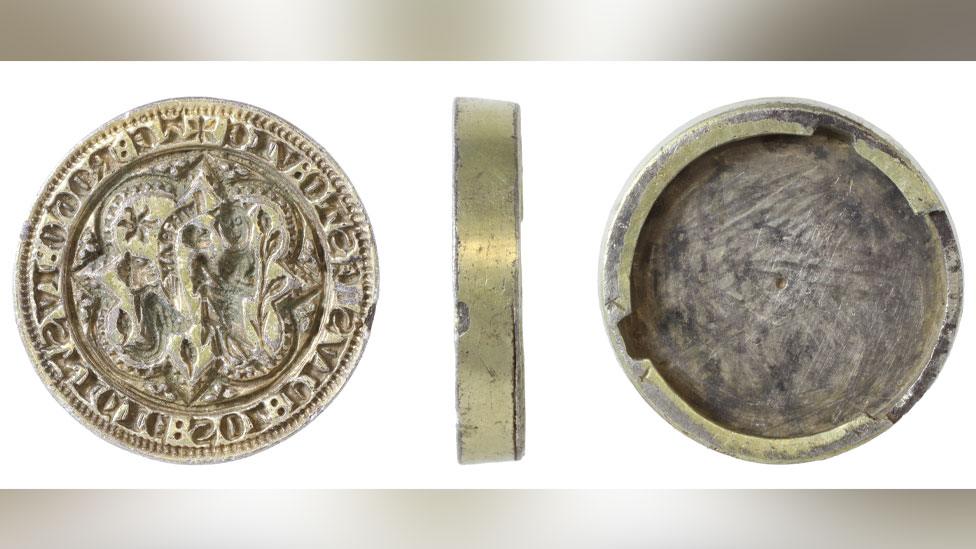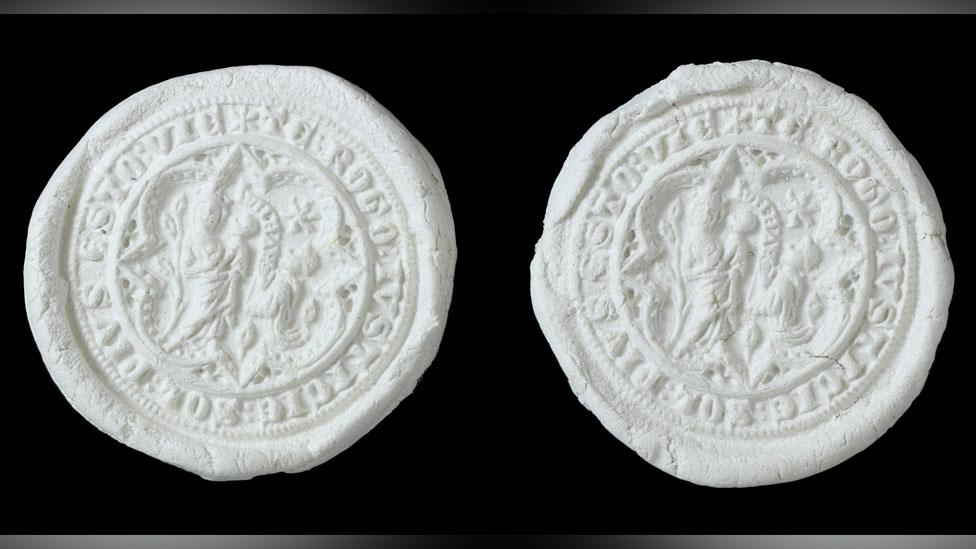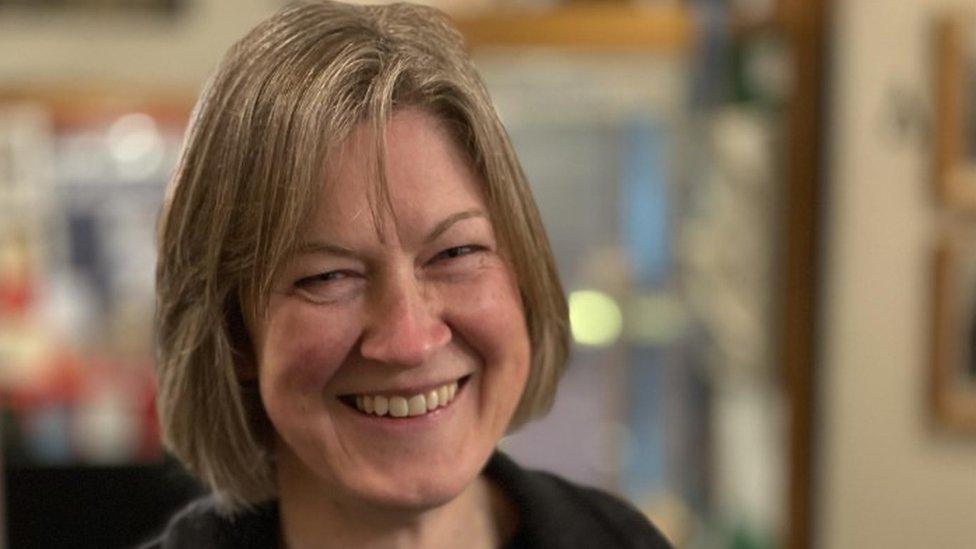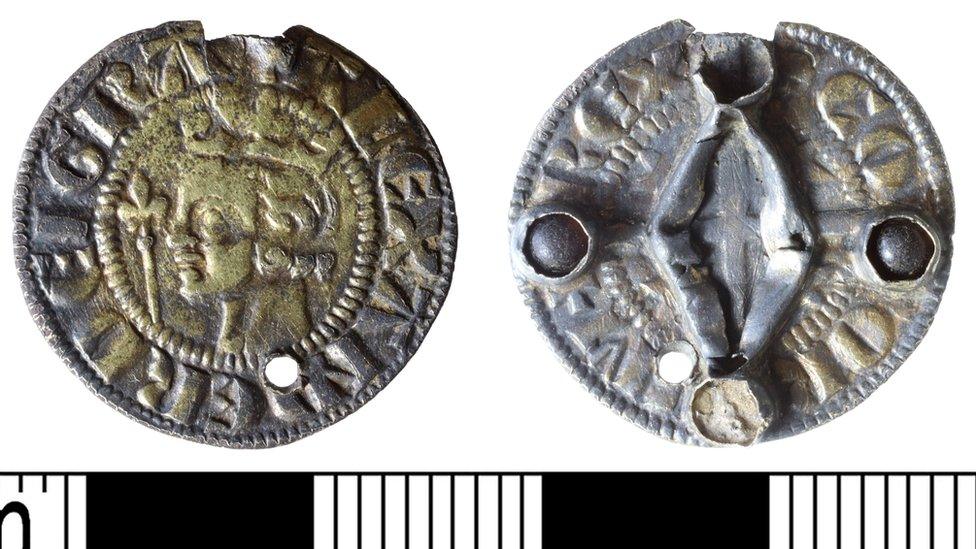Medieval monk's 'unique' seal matrix found near Norwich
- Published

The 24.6mm (0.9in) gilded silver object was designed for a detachable handle
A medieval seal matrix discovered by a metal detectorist is "a window into someone's spiritual world just before the Black Death", an expert has said.
The "completely unique" gilded silver object, found in a field north of Norwich, probably belonged to a monk.
Its inscription "I beseech thee, holy sun of righteousness, be the way" has not been found on any other object, according to historian Helen Geake.
"It's a really sophisticated object with a really good design," she said.

In a wax impression, the Virgin Mary holding the Christ child can be seen on the left, while on the right a tonsured monk kneels before her
Dr Geake, Norfolk's find liaison officer, said: "It's completely unique, we don't have anything to compare with this inscription.
"The 'sun of righteousness', appears in the Old Testament, towards the end of a set of prophecies, and became a relatively common way of referring to Jesus Christ in the Middle Ages."
The medieval Latin inscription reads TE: ROGO: IVSTICIE: SOL: PIVS: ESTO: VIE / AVE MA.
The 24.6mm (0.9in) seal, which dates to the late 13th or early 14th Century, covering the reigns of Edward I to Edward III, was found in April in a field near Horsham St Faith.
Its detailed design includes a crowned Virgin Mary holding the Christ child and kneeling to her right is a monk looking up at her, identified by his tonsure.
He would have attached the matrix to a handle and used it to stamp an impression on wax to authenticate documents.

Dr Helen Geake believes the seal matrix was owned by a monk as it depicts a "private, little prayer"
Dr Geake said another "unusual" aspect of the find is that it appears to be designed for "a detachable handle, with the matrix rotating either to lock it in position, or to remove it, as if interchangeable die could be used with the same handle".
The die is the part of the matrix which stamps wax.
She believes it must have been owned by a monk and he would have exchanged the die with others, one of which was personal and another to reflect his official role in the monastery.
"It's unique in two different ways - it's interchangeable and it has this little, private prayer," Dr Geake said.
"It's a window into someone's personal, emotional or spiritual world in the years before the Black Death."
The pandemic swept through Europe between 1347 and 1351, external, with a huge loss of life.
The find is the subject of a coroner's inquest.

Follow East of England news on Facebook, external, Instagram, external and X, external. Got a story? Email eastofenglandnews@bbc.co.uk, external or WhatsApp 0800 169 1830
Related topics
- Published2 November 2023
- Published27 October 2022

- Published19 August 2022

- Published15 March 2022

- Published19 September 2020
